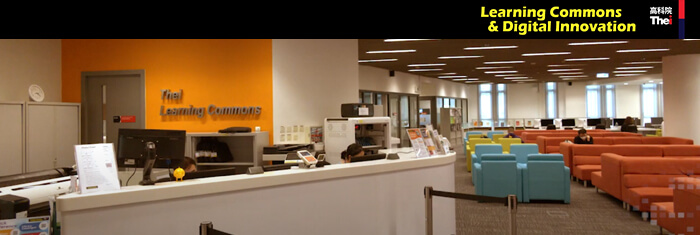

New to Programme Leadership and Growing Your Skills in Higher Education Teaching and Learning
Aim: The programme is designed for continuous enhancement of academic staff in pedagogical knowledge and skills for conducting learning and teaching activities; effective use of emergent technology to enhance learning, and leadership.
Pedagogy (3 hours 39 minutes)
Technology-Enhanced Learning (5 hours 15 minutes)
Leadership (1 hour 53 minutes)
Course details
Gamification is an underutilized element in instructional design, but it's crucial to engaging today's learners and enabling content mastery. In this course, professor, instructional game designer, and author Karl Kapp lays the foundations of the theory, provides examples of gamification in three real-world learning scenarios, and breaks down the dynamics of gamification (aka what makes games fun!): escape, collection, discovery, pattern recognition, and other risk/reward activities. Plus, learn to put the different elements of gamification—from setting goals to providing multidimensional feedback and leveling up—to work for your classroom. If you don't have experience gaming, don't worry. Professor Kapp focuses on gamification as a design sensibility, making the principles clear to gamers and nongamers alike.
Learning objectives
Course details (41 minutes)
Course details (41 minutes)
Learning objectives
Course details
Blended learning is all about the students: combining instruction with digital resources to help increase student achievement and engagement. In this course, Chris Mattia explores the various aspects of blended learning, and provides guidelines to create a blended classroom that meets students' diverse learning needs. The techniques rely on technologies such as Google Apps, Android and iOS devices, video, learning management systems (LMSs), and open-source tools such as WordPress to promote sharing and collaboration. Watch and learn how to use blended learning to create dynamic, engaging, and student-focused lessons.
Learning objectives
Course details
Need to quickly transfer your face-to-face class to an online learning environment? In this course, educators Ashley Kennedy and Oliver Schinkten help you successfully make the jump to online learning, sharing strategies for taking what was great about your in-person course and making it work in a virtual classroom. Ashley and Oliver demonstrate how to break down your existing syllabus, and then offer you a step-by-step guide for moving that course online. Learn about the process of incorporating both synchronous and asynchronous virtual learning opportunities into your new virtual classroom. Explore strategies for dynamic communication, collaboration, and assessment that can help you keep your students engaged. Along the way, Ashley and Oliver share tools and strategies that can help you shine as an online instructor.
Course details
Technology has changed the nature of education—and the jobs of educators. Online instruction requires different methods to help students learn. This course is designed to help corporate trainers and teachers update their skill sets to teach effectively online. Staff author Oliver Schinkten draws the connections between high-quality instruction and online education. He provides a framework for creating a digital classroom and guidance to get students interacting with the course material, the instructor, and each other. Collaboration is the key to making the learning experience more dynamic. Plus, Oliver shows how to make sure your lessons are accessible to students of all ability levels.
Learning objectives
Course details
Moodle, the popular learning management system (LMS), has revolutionized education. Instructors can create online classes for anywhere, anytime learning; add assessments and activities; track student progress; calculate grades; and more. Students can access resources, complete assignments, and communicate with classmates and instructors—all from a single digital platform. This course demonstrates how instructors can get started using Moodle 3.9, including newer features such as HP5 (rich HTML) content and secure assessments. LinkedIn Learning staff instructor Oliver Schinkten shows how to set up a profile, create a course, and adjust course settings. Then find out how to add files, post announcements, and make quizzes. Finally, learn how to enroll students, grade assignments, and run reports.
Learning objectives
Course details
Leadership—the art of influencing and developing others to achieve their highest potential—is often identified as the most critical role in an organization. But what is effective leadership and how do you cultivate it? In this course, leadership consultant and global workforce expert Dr. Shirley Davis covers the basics of leading yourself and others. Along the way, she identifies the critical competencies and best practices for effectively leading today and in the future. Learn how to lead across differences and cultivate a more inclusive workplace; establish trust; build relationships up, down, and across the organization; lead change through agility and resilience; have difficult conversations; and more.
Learning objectives
Course details
Strategic thinking is the ability to think on a big and small scale, long and short term, and into the past and the present. While strategic thinking is a valuable skill for everyone in an organization, it becomes increasingly essential as you ascend the ladder. In fact, you may have a difficult time being promoted or succeeding as a leader without it. Yet, no one formally teaches strategic thinking—so it's critical to take the initiative and learn how to do it yourself. This course teaches managers and leaders how to use strategic thinking to guide the direction of their teams and come up with solutions to key business problems. Career and personal branding expert Dorie Clark shows you how to carve out time to think about strategy, gather data, learn from the past, create a vision for the future, and implement strategic thinking within your team.
Learning objectives
Course details
Get started with objectives and key results (OKRs), the popular management methodology for goal setting that can encourage collaboration and alignment, clarify priorities, and empower employees to do their best work. Instructor Jessie Withers walks through the concepts behind OKRs, how to design OKRs for groups, and how to implement the framework across an organization. Jessie also discusses how to manage OKRs throughout the year, measure results, and create a culture of accountability.
Learning objectives
